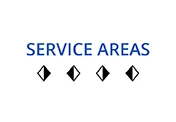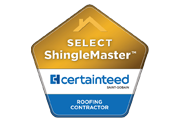Improperly Installed Skylights Can Cause Leaks
Skylights can provide many benefits in your home. They allow you to have natural light in areas of your home you’d never thought possible! Whether your space is set up as a work area, game room, man cave, or an art studio, you can add natural light and a sky view with fixed skylights. However, if a skylight isn’t properly installed, this benefit can quickly become problem.
Improperly installed skylights can cause leaks due to several factors. Here’s how improper installation can lead to water infiltration and damage:
1. Poor Sealing and Flashing
- Incorrect Flashing: Flashing is essential for directing water away from the skylight. If it’s not installed correctly or is missing, water can seep into the roof structure.
- Inadequate Sealing: The edges of the skylight need to be properly sealed. If the sealant is improperly applied or of poor quality, it can lead to gaps where water can enter.
2. Incorrect Slope
- Flat Installation: Skylights should be installed at a slight slope to allow water to run off. If they are installed flat or with an insufficient slope, water can pool and eventually seep through the seals.
3. Improper Installation of the Skylight Frame
- Misaligned Frame: If the skylight frame is not properly aligned with the roof opening, it can create gaps or uneven surfaces where water can enter.
- Loose Installation: If the frame is not securely fastened, it can shift or move over time, creating opportunities for leaks.
4. Inadequate Waterproofing
- Missing Waterproof Membrane: A waterproof membrane around the skylight is crucial for preventing leaks. If it’s missing or improperly installed, water can penetrate the roof.
- Substandard Materials: Using low-quality waterproofing materials can result in deterioration and leaks over time.
5. Roof and Skylight Interface Issues
- Roofing Material Overlaps: The roofing materials need to properly overlap the edges of the skylight to ensure water is directed away. Incorrect overlaps can cause water to run underneath the roofing material and into the home.
- Inconsistent Roof Surface: If the roof surface is uneven or not properly prepared before installation, it can create gaps or weak points where water can enter.
6. Ventilation and Condensation Problems
- Poor Ventilation: Lack of proper ventilation can lead to condensation forming on the inside of the skylight, which can mimic leaks and cause water damage.
- Incorrect Insulation: Inadequate insulation around the skylight can lead to temperature differentials that cause condensation and water problems.
7. Maintenance Neglect
- Sealant Degradation: Over time, the sealant around the skylight can degrade due to weather exposure. If not regularly inspected and maintained, it can lead to leaks.
- Debris Accumulation: Leaves, dirt, and other debris can accumulate around the skylight, blocking water runoff and causing pooling, which can lead to leaks.
8. Installation Errors
- Incorrect Measurements: Incorrectly sized skylights or roof openings can lead to improper fitting and sealing issues.
- Inexperienced Installers: Hiring unqualified or inexperienced installers increases the likelihood of mistakes that can result in leaks.
Prevention Tips
To avoid leaks from improperly installed skylights, consider the following tips:
- Hire Experienced Professionals: Ensure that installers are experienced and reputable. Check their references and reviews.
- Quality Materials: Use high-quality skylights, flashing, sealants, and other materials.
- Proper Flashing and Sealing: Ensure that flashing and seals are correctly installed and of high quality.
- Regular Maintenance: Regularly inspect and maintain the skylight, especially after severe weather.
- Adequate Slope and Installation: Ensure that the skylight is installed with the correct slope and securely fastened to the roof.
Contact Style Roofing today to learn how our expert installers use only quality materials and superior craftmanship to ensure your skylight is installed correctly the first time, functions properly, enhancing the aesthetics of your home.











